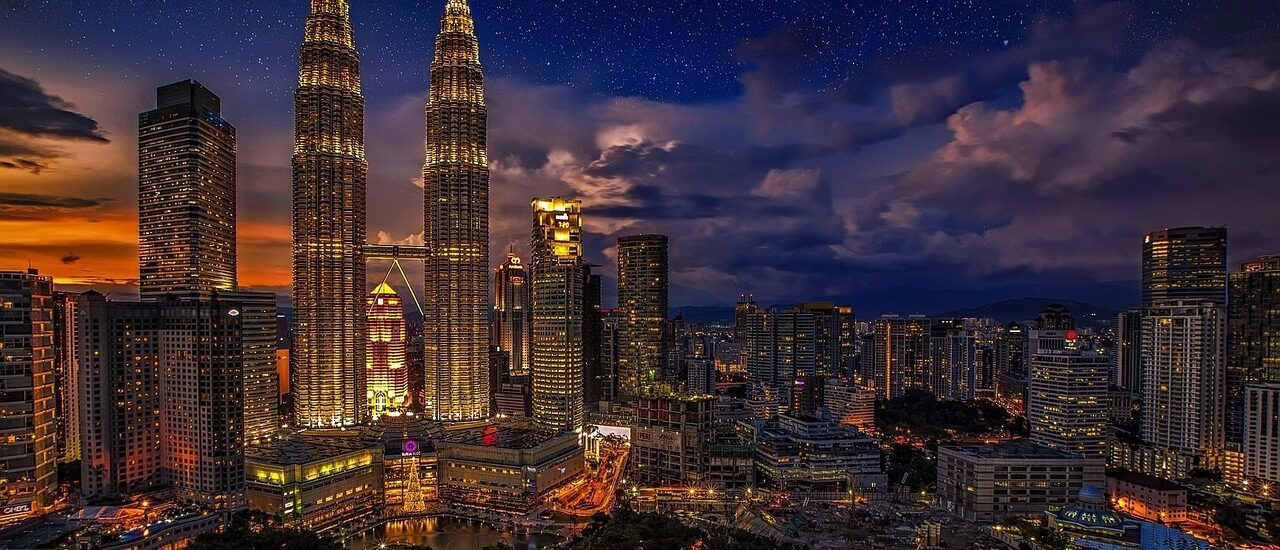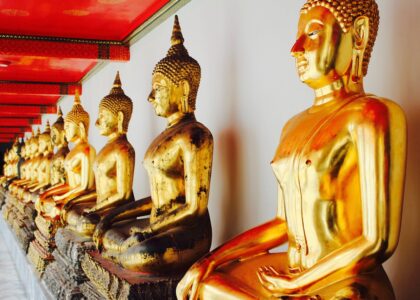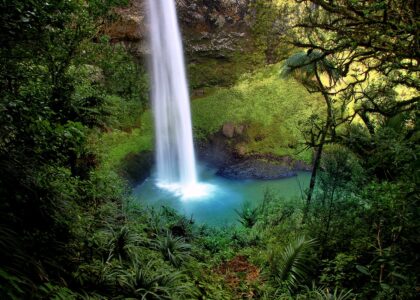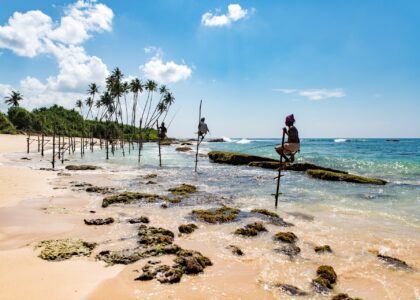Kuala Lumpur, a melting pot of cultures and architectural wonders, offers a captivating mix of historical sites, modern attractions, and culinary experiences. Here’s a curated guide to Kuala Lumpur’s must-see destinations:
Petronas Twin Towers: Ascend to the top of the iconic Petronas Twin Towers, the city’s most recognizable landmark, for breathtaking views of Kuala Lumpur’s skyline. From the observation deck, marvel at the cityscape stretching out below, the lush greenery of the surrounding hills, and the distant mountains.
Merdeka Square: Delve into Malaysia’s history at Merdeka Square, the site where the country declared independence in 1957. Admire the colonial-era buildings surrounding the square, including the Sultan Abdul Samad Building with its Moorish architecture.
Batu Caves: Embark on a journey to the sacred Hindu shrine of Batu Caves, a limestone outcrop housing a series of temples and shrines. Climb the 272 colorful steps leading to the main cave, encountering monkeys and admiring the intricate Hindu statues along the way.
Central Market: Immerse yourself in the vibrant atmosphere of Central Market, a bustling hub of Malaysian handicrafts, souvenirs, and local delicacies. Browse through stalls showcasing batik textiles, intricate carvings, and traditional crafts, and savor the flavors of authentic Malaysian cuisine.
Islamic Arts Museum Malaysia: Explore the rich artistic heritage of Islamic culture at the Islamic Arts Museum Malaysia. Admire the extensive collection of Islamic artifacts, including intricate calligraphy, ceramics, textiles, and architectural pieces.
KL Bird Park: Step into a world of feathered wonders at KL Bird Park, home to over 3,000 birds from around the world. Wander through the aviary enclosures, encountering colorful parrots, majestic eagles, and exotic birds of paradise.
Thean Hou Temple: Discover the Thean Hou Temple, a six-tiered Chinese temple perched atop a hill, offering panoramic views of the city. Admire the intricate architecture, adorned with colorful carvings and traditional Chinese motifs.
Jalan Alor: Indulge in a culinary adventure along Jalan Alor, a bustling street food haven lined with hawker stalls and restaurants. Savour the aromas of sizzling satay, spicy curries, and fragrant noodle dishes, and experience the vibrant street food culture of Kuala Lumpur.
Petaling Street: Immerse yourself in the lively atmosphere of Petaling Street, a bustling Chinatown market known for its vibrant atmosphere and bargain finds. Navigate the narrow alleys, haggle with vendors over souvenirs and trinkets, and discover hidden gems amidst the bustling stalls.
Perdana Botanical Gardens: Escape the city’s hustle and bustle in Perdana Botanical Gardens, a serene oasis amidst the urban landscape. Stroll through the lush greenery, relax by the lake, and admire the vibrant flora, including the Hibiscus Garden and Orchid Garden.
Kuala Lumpur’s diverse attractions, from iconic landmarks to bustling markets and serene gardens, offer a captivating blend of cultural immersion, urban exploration, and culinary delights. Whether you’re seeking historical insights, culinary adventures, or a taste of authentic Malaysian culture, Kuala Lumpur promises an unforgettable experience.
Which part of Kuala Lumpur is best to stay?
The best area to stay in Kuala Lumpur depends on your preferences and budget:
Bukit Bintang: A vibrant and central district known for its shopping malls, nightlife, and street food.
KLCC: A modern and upscale area surrounding the iconic Petronas Twin Towers, offering luxury hotels and fine dining options.
Chinatown: A bustling and historic neighborhood with a mix of Chinese heritage, local markets, and affordable accommodations.
Bangsar: A trendy and upscale neighborhood with boutique shops, cafes, and a vibrant expat community.
Petaling Jaya: A suburb just outside the city center, offering a more relaxed atmosphere and affordable accommodation options.
What is Kuala Lumpur best known for?
Kuala Lumpur is known for its iconic Petronas Twin Towers, its diverse cultural heritage, its vibrant street food scene, and its lush green spaces. It’s a melting pot of Malay, Chinese, and Indian influences, reflected in its architecture, cuisine, and cultural attractions.
Is 4 days enough in Kuala Lumpur?
Four days is a good amount of time to explore Kuala Lumpur’s main attractions, experience its diverse neighborhoods, and sample its culinary delights. With more time, you can delve deeper into the city’s cultural offerings and take day trips to nearby attractions like the Batu Caves or the Genting Highlands.
Is 3 days enough in Kuala Lumpur?
Three days is a decent amount of time to hit the main highlights of Kuala Lumpur, including the Petronas Twin Towers, the Batu Caves, and the historic district. However, with more time, you could explore the city’s diverse neighborhoods, experience its vibrant nightlife, and venture out to nearby attractions.
Is Kuala Lumpur an expensive city?
Kuala Lumpur is considered a relatively affordable city compared to major cities in Europe or North America. Accommodation, food, and transportation costs are generally reasonable, and there are plenty of budget-friendly options available.
How many days in Kuala Lumpur is enough?
The ideal length of stay in Kuala Lumpur depends on your interests and pace. Three to four days is enough to cover the main attractions, while a week or more allows for deeper exploration and day trips to surrounding areas.
Which month is best for Kuala Lumpur?
The best time to visit Kuala Lumpur is during the dry season, from December to February, when the weather is sunny and less humid. However, the city can be visited year-round, as temperatures remain relatively consistent.
Is Kuala Lumpur cheap for tourists?
Kuala Lumpur is generally considered an affordable destination for tourists. Accommodation, food, and transportation costs are relatively low compared to many major cities. There are also plenty of free attractions and budget-friendly options available.
Is Malaysia expensive for tourists?
Malaysia is generally considered a budget-friendly destination for tourists. The cost of living, including accommodation, food, and transportation, is relatively low compared to many Western countries. However, certain imported goods or luxury items might be more expensive.
Is Kuala Lumpur tourist-friendly?
Kuala Lumpur is a very tourist-friendly city. English is widely spoken, especially in tourist areas, and there are plenty of services and amenities geared towards visitors. The city is also relatively safe and easy to navigate.
Is Kuala Lumpur expensive to eat and drink?
Eating and drinking in Kuala Lumpur can be very affordable, especially if you stick to local cuisine and street food. Mid-range restaurants are also reasonably priced, while fine dining establishments can be more expensive.
Do you need a visa for Malaysia?
Visa requirements for Malaysia vary depending on your nationality. Citizens of many countries, including the United States, Canada, and the European Union, can enter Malaysia visa-free for stays of up to 90 days. Check with your local embassy or consulate for specific visa requirements.





